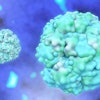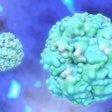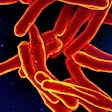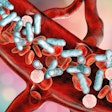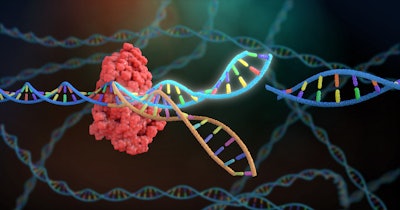
Newly developed glow-in-the-dark proteins could make viral disease diagnosis quicker and easier, according to researchers in the Netherlands.
Their study, published Wednesday in ACS Publications, outlines a sensitive, one-step method that quickly analyzes viral nucleic acids and allows them to show up with help from luminescent bright blue or green proteins.
The identification of pathogens by the detection of their nucleic acid fingerprints is a key strategy in clinical diagnostics, biomedical research, and food and environmental safety monitoring. The widely used quantitative polymerase chain reaction (PCR) test is highly sensitive but requires complicated techniques to prepare a sample or interpret a result, making it impractical for some point-of-care or resource-deficient settings.
The Netherlands-based group, a collaboration among university and hospital researchers, sought to develop a rapid, portable, and easy-to-use nucleic acid diagnostic method that could be applied in a variety of settings.
The were inspired by the way the firefly’s flash, the glow-worm’s glow, and the tiny starry lights of aquatic phytoplankton are all powered by a phenomenon called bioluminescence. This glow-in-the-dark effect is caused by a chemical reaction involving the luciferase protein. Scientists have incorporated the luciferase protein into sensors that emit an easy-to-see light when they find their target. Although this makes these sensors ideal for point-of-care testing, they currently lack the high sensitivity required of clinical diagnostic tests. While the gene-editing technique CRISPR could provide this ability, it requires many steps and additional specialized equipment to detect what may be a low signal in a complex, noisy sample.
The researchers found a way to combine CRISPR-related proteins with a bioluminescent signal that could be detected with a simple digital camera. To ensure that there was enough sample RNA or DNA to analyze, the researchers performed recombinase polymerase amplification (RPA), a simple method that works at a constant temperature of about 100° F. They developed a new platform, called a luminescent nucleic acid sensor (LUNAS), in which two CRISPR/Cas9 proteins specific for different neighboring parts of a viral genome each have a distinct fragment of luciferase attached to them.
When a specific viral genome that the researchers are testing for is present, the two CRISPR/Cas9 proteins bind to the targeted nucleic acid sequences; their proximity to each other allows the complete luciferase protein to form and shine blue light in the presence of a chemical substrate. To account for the substrate being consumed in the process, the researchers used a control reaction that glowed green. A tube that changed from green to blue indicated a positive result.
The researchers tested their platform by designing an RPA-LUNAS assay that allowed SARS-CoV-2 RNA detection without the need for cumbersome RNA isolation and demonstrated its diagnostic performance on nasopharyngeal swab samples from COVID-19 patients. RPA-LUNAS successfully detected SARS-CoV-2 from samples with viral RNA loads as low as 200 copies per microliter within 20 minutes.
The researchers believe that their assay has the potential for easily and effectively detecting many other viruses. “RPA-LUNAS is attractive for point-of-care infectious disease testing,” they wrote.


